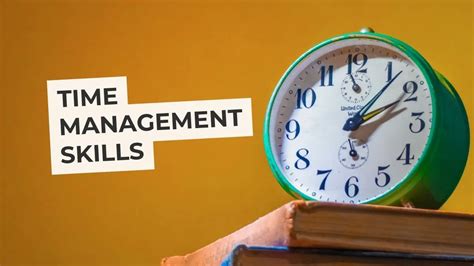Intro
Discover how Cognitive Behavioral Therapy (CBT) can help alleviate Executive Dysfunction symptoms. Learn 5 effective ways CBT improves planning, organization, time management, and self-regulation skills, enhancing overall productivity and daily functioning. Break free from executive function deficits and achieve mental clarity with CBTs evidence-based strategies.
Executive dysfunction is a term used to describe a range of cognitive, emotional, and behavioral difficulties that affect an individual's ability to plan, organize, and execute tasks. It can be caused by various factors, including attention deficit hyperactivity disorder (ADHD), autism spectrum disorder, traumatic brain injuries, and neurodegenerative diseases. Cognitive-behavioral therapy (CBT) is a well-established treatment approach that has been shown to be effective in helping individuals manage executive dysfunction. In this article, we will explore five ways CBT can help individuals with executive dysfunction.

Improving Planning and Organization Skills
One of the primary challenges individuals with executive dysfunction face is planning and organization. They may struggle to break down complex tasks into manageable steps, prioritize tasks, and create schedules. CBT can help individuals develop these skills by teaching them how to use tools such as planners, reminders, and apps to stay organized. A therapist can work with the individual to identify specific areas of difficulty and develop strategies to overcome these challenges.
For example, a therapist may help an individual create a daily schedule that includes time blocks for tasks, breaks, and leisure activities. They may also teach the individual how to use a planner to prioritize tasks, set reminders, and track progress. By practicing these skills, individuals can improve their ability to plan and organize their daily lives.
Breaking Down Large Tasks into Smaller Steps
Individuals with executive dysfunction often struggle with large tasks, which can feel overwhelming and lead to procrastination. CBT can help individuals break down large tasks into smaller, more manageable steps. This process is called "task segmentation." By breaking down a large task into smaller steps, individuals can focus on one step at a time, making the task feel less overwhelming.
For example, if an individual is struggling to write a research paper, a therapist may help them break down the task into smaller steps, such as:
- Conducting research
- Creating an outline
- Writing the first draft
- Editing and revising
By focusing on one step at a time, the individual can make progress on the task without feeling overwhelmed.
Enhancing Time Management Skills
Individuals with executive dysfunction often struggle with time management, which can lead to missed deadlines, forgotten appointments, and lost productivity. CBT can help individuals develop time management skills by teaching them how to estimate the time required for tasks, prioritize tasks, and avoid distractions.
For example, a therapist may help an individual identify common distractions, such as social media or email, and develop strategies to avoid these distractions during work hours. They may also teach the individual how to use a timer to stay focused on tasks and take regular breaks to avoid burnout.

Improving Working Memory and Cognitive Flexibility
Working memory and cognitive flexibility are essential cognitive skills that enable individuals to hold and manipulate information in their minds. Individuals with executive dysfunction often struggle with these skills, which can lead to difficulties with problem-solving, learning new information, and adapting to changes.
CBT can help individuals improve their working memory and cognitive flexibility by teaching them strategies such as:
- Rehearsal: repeating information out loud or to oneself to aid memory
- Chunking: breaking down information into smaller groups to aid memory
- Mindfulness: paying attention to the present moment to improve cognitive flexibility
For example, a therapist may help an individual practice rehearsal by repeating a list of items out loud or to themselves. They may also teach the individual how to use chunking to break down complex information into smaller groups.
Developing Self-Regulation Skills
Self-regulation skills are essential for individuals with executive dysfunction, as they enable individuals to control their emotions, behaviors, and cognitive processes. CBT can help individuals develop self-regulation skills by teaching them strategies such as:
- Self-monitoring: tracking one's thoughts, feelings, and behaviors
- Self-evaluation: evaluating one's performance and progress
- Self-reinforcement: rewarding oneself for accomplishments and progress
For example, a therapist may help an individual develop a self-monitoring system to track their daily habits, such as exercise, sleep, and eating. They may also teach the individual how to evaluate their performance and progress, and how to reinforce themselves for accomplishments and progress.
Increasing Motivation and Engagement
Individuals with executive dysfunction often struggle with motivation and engagement, which can lead to difficulties with initiating and completing tasks. CBT can help individuals increase their motivation and engagement by teaching them strategies such as:
- Goal-setting: setting specific, achievable goals
- Positive self-talk: using positive affirmations to motivate oneself
- Reward systems: creating a reward system to reinforce progress and accomplishments
For example, a therapist may help an individual set specific, achievable goals, such as completing a task or project. They may also teach the individual how to use positive self-talk to motivate themselves, and how to create a reward system to reinforce progress and accomplishments.

In conclusion, CBT is a highly effective treatment approach for individuals with executive dysfunction. By teaching individuals skills such as planning and organization, time management, working memory and cognitive flexibility, self-regulation, and motivation and engagement, CBT can help individuals manage their executive dysfunction and improve their daily lives.
What is executive dysfunction?
+Executive dysfunction is a term used to describe a range of cognitive, emotional, and behavioral difficulties that affect an individual's ability to plan, organize, and execute tasks.
How can CBT help individuals with executive dysfunction?
+CBT can help individuals with executive dysfunction by teaching them skills such as planning and organization, time management, working memory and cognitive flexibility, self-regulation, and motivation and engagement.
What is task segmentation?
+Task segmentation is the process of breaking down a large task into smaller, more manageable steps.
We hope this article has provided you with a comprehensive understanding of how CBT can help individuals with executive dysfunction. If you have any further questions or concerns, please don't hesitate to ask. Share your thoughts and experiences in the comments section below, and don't forget to share this article with others who may benefit from it.
